If you're off on holiday, the chances are you're going to get close to some water, whether it's a hotel pool or the deep blue sea. It's also likely you'll want to capture some snaps of your aquatic adventures – and most cameras won't thank you for taking them anywhere near water.
However, this bunch of waterproof wonders are right at home capturing subaquatic scenes, and will let you dive as deep as 30 metres to fish out the perfect shot. They're all shock-proof and freeze-proof too, and some are even crush-proof.
The fun doesn't stop there, as you'll also find many rugged cameras come packed with features such as GPS location tagging, Wi-Fi connectivity and even action-orientated extras like a compass or altimeter.
Pick the right waterproof camera, and image quality will also give a typical land-loving compact a run for its money. The only compromise you'll need to make in exchange for the ability to shoot during some rough and tumble is a below-average zoom range.
If you want a camera for holiday with a longer zoom range, take a look at our pick of travel zoom compacts. Alternatively, video might be your main priority, which in that case, take a look at our guide to the best action cameras and best GoPro cameras.
So don't let your camera hold you back – all of these waterproof and rugged snappers are cut out for the wet and wild life.
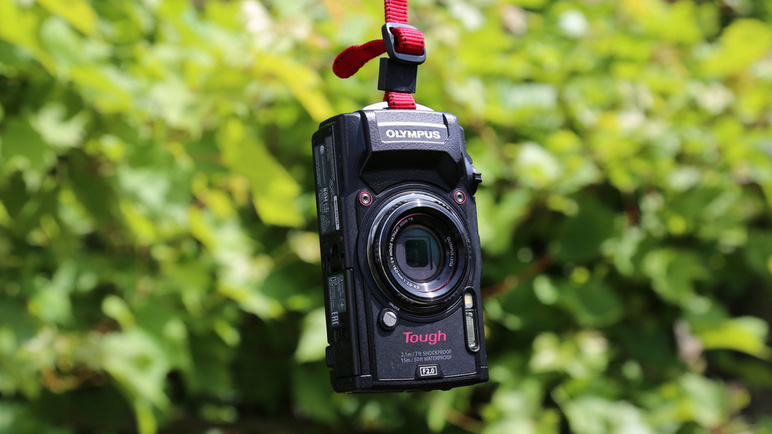
Few rugged cameras can match the TG-5's exceptional build quality and confidence-inspiring rugged feel. Certainly, from our time using it, the TG-5 is built to survive pretty much anything you could throw at it, literally. A chunky, ergonomic design and well-designed controls make the TG-5 a pleasure to use in any weather. Olympus has taken the unusual step of actually dropping the pixel count from 16MP on the TG-4 to 12MP on the TG-5. While resolution drops a bit, it means the pixels are not quite as densely packed in, delivering a better noise performance. The TG-5 borrows the built-in Field Sensor System we've seen on the TG Tracker, which consists of a GPS sensor, pressure, compass and temperature sensor. The data gathered can be displayed with images and videos using the Olympus Image Track app. It also gets the latest TruePic VIII processor found in the E-M1 Mark II, and can now capture 4K video at 30p or high speed footage at 120p in Full HD. Our pick of the bunch.
- Read our in-depth Olympus Tough TG-5 review
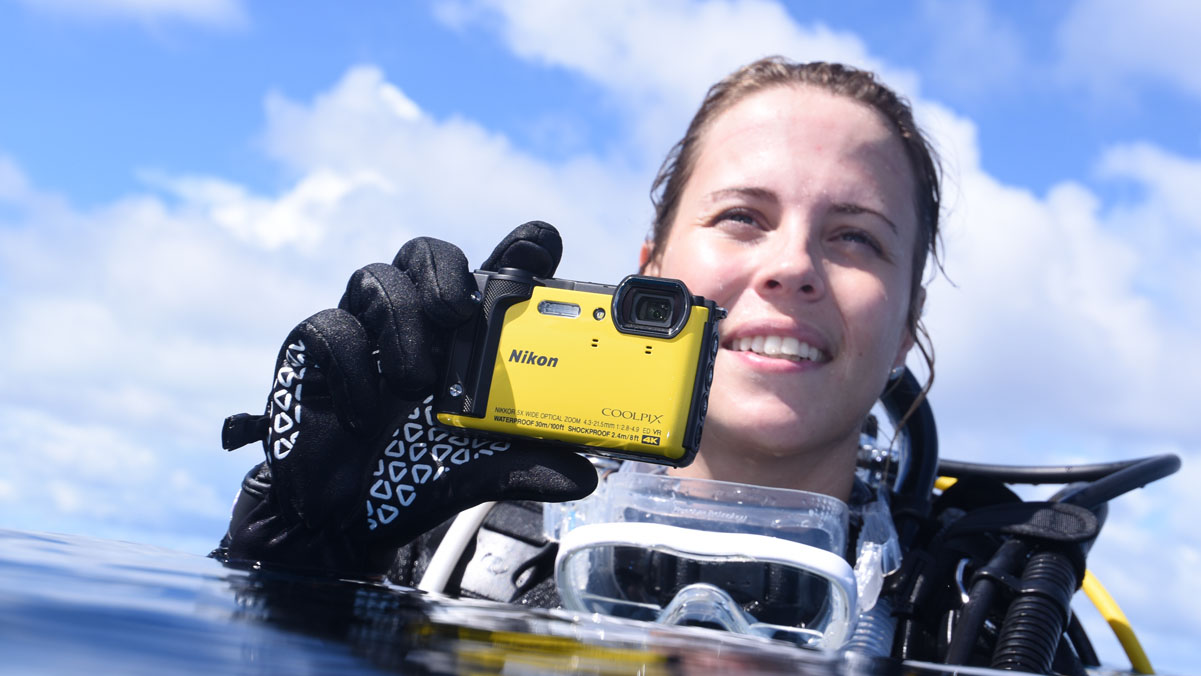
The Coolpix W300 comes fully-loaded with a host of features – there's 4K video for starters, a terrific GPS system, interactive world map and Wi-Fi connectivity, plus an altimeter and underwater depth gauge to boot. The W300 also offers a high resolution, 921k dot OLED monitor, but perhaps most impressive of all is that the W300 can function down to a depth of 30 metres – as far as an Advanced Open Water diving certificate will get you.
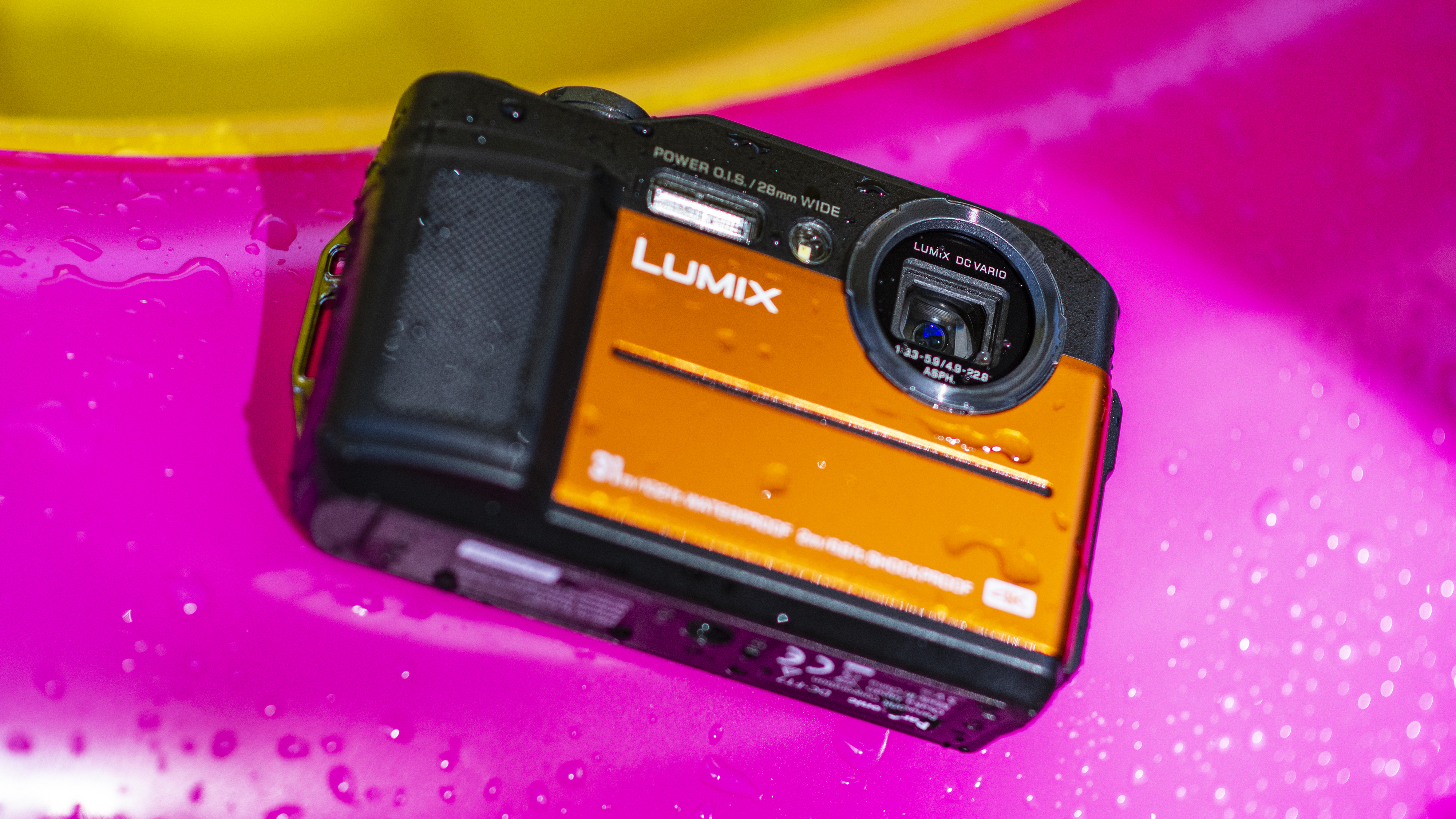
Panasonic's new Lumix TS7 (called the Lumix FT7 outside the US) is the latest waterproof camera here. As opposed to Olympus, which reduced the resolution of its TG-5, Panasonic has gone the other direction, increasing the pixel count from 16.1MP in the TS5 / FT5 to 20.4MP in the Lumix TS7 / FT7. Lens coverage remains the same as its predecessor, with a 4.6x zoom range that covers 28-128mm, but interestingly, the lens loses its Leica branding. The Lumix TS7 / FT7 does have something unique for a waterproof camera: a built-in electronic viewfinder (EVF). The 1,170k-dot, 0.2-inch display might not be the largest out there, but it does offer a useful alternative to shooting with the rear display, especially in bright light, which can make composition tricky. There's lots to like about the Lumix TS7 / FT7, including its excellent tough credentials, but is let down by a sensor that crams too many pixels onto a relatively small area.
- Read our in-depth Panasonic Lumix TS7 / FT7 review
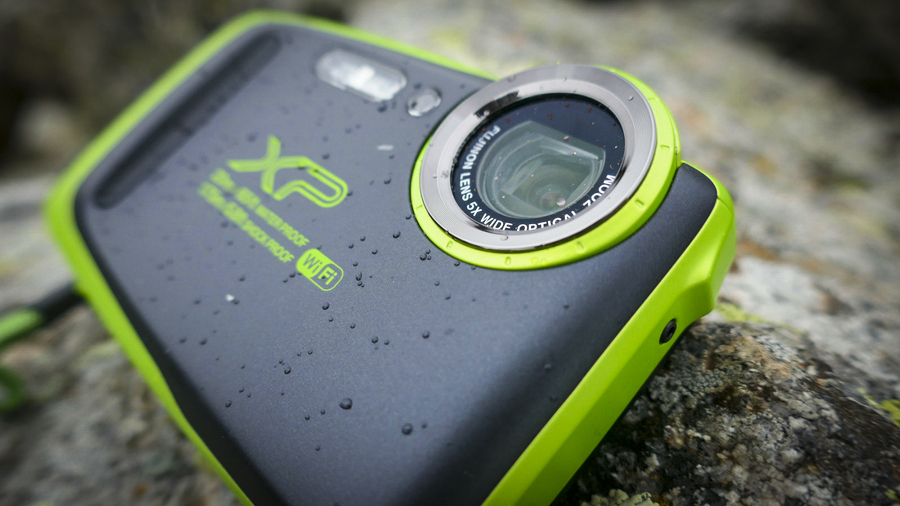
Compared to ultra-rugged competition, the FinePix XP130 doesn't have quite the same credentials. That means that it might not be quite up to some of the more active users, but still more than up to the job of a family beach or skiing holiday. There are a host of fun filters included, and Wi-Fi connectivity, but no GPS. Simple to use, this is a great option if you're after a durable point-and-shoot compact camera for family use, though don't expect too much from it.
- Read our in-depth Fujifilm FinePix XP130 review
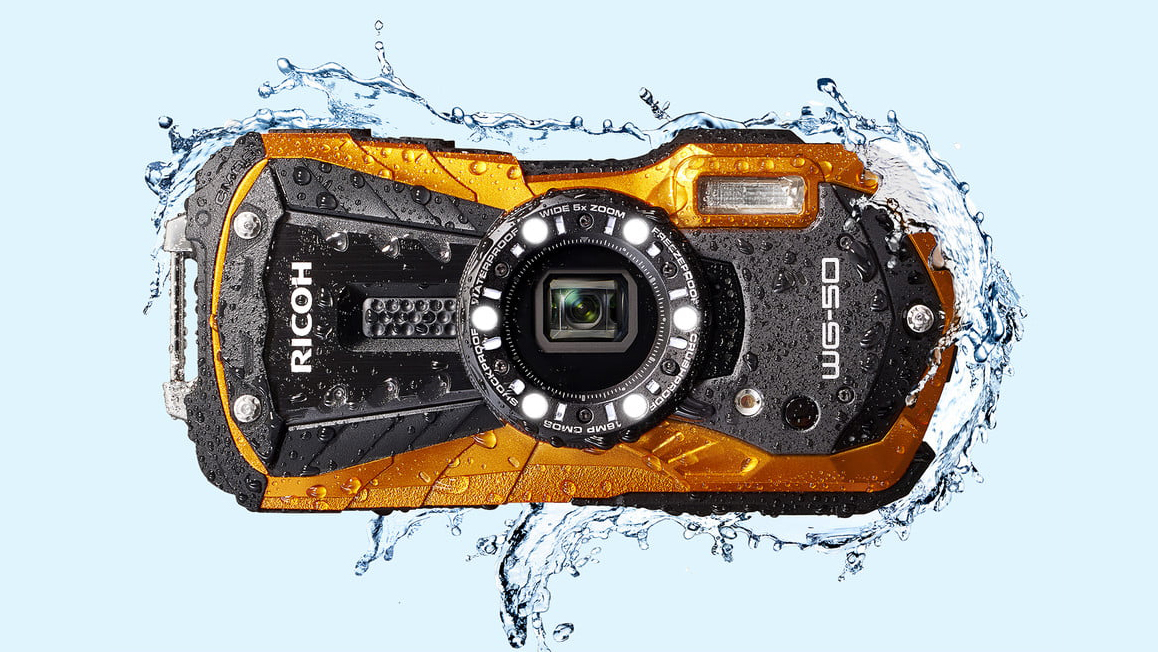
The WG-50 from Ricoh has some pretty strong tough credentials – it's waterproof to a depth of 14m/45.9ft and shockproof from a fall of up to 1.6m/5.2ft, while it should withstand a force of up to 100kg/220lbs. It's also dust-proof, and can operate in temperatures down to -10°C/14°F. The 5x optical zoom has a pretty broad focal zoom range, from 28-140mm, while there are six LED macro lights dotted round the front of the lens barrel to deliver bright and uniformed lighting round your subject – ideal when shooting underwater subjects. The macro lights also provide other useful functions, such as the LED Lighting mode, that uses the lights for adding light to portraits in poor light – it should deliver a more flattering look than the WG-50’s dedicated flash.
Also consider…
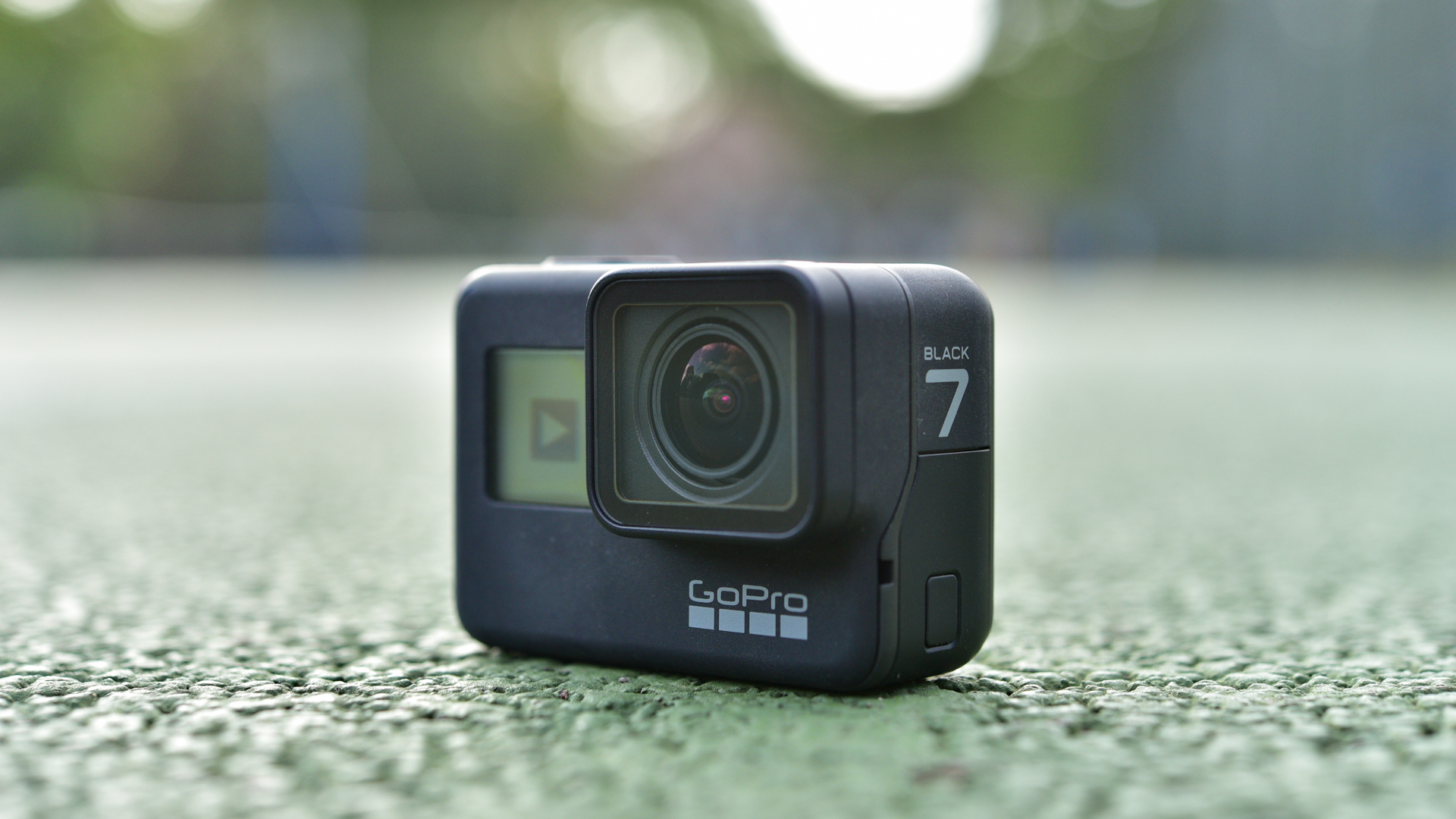
Action cameras have overshadowed dedicated waterproof cameras a little over the last few years, but it depends on what you want to shoot. If video's your main priority, then GoPro's Hero7 Black is a brilliant choice. It's our pick of the action cams and can shoot super smooth 4K video at up to 60fps and features a brilliant image stabilization system. Not only can it also take a pretty decent 12MP still photo, it can even shoot raw files as well.
- Read our in-depth GoPro Hero7 Black review
